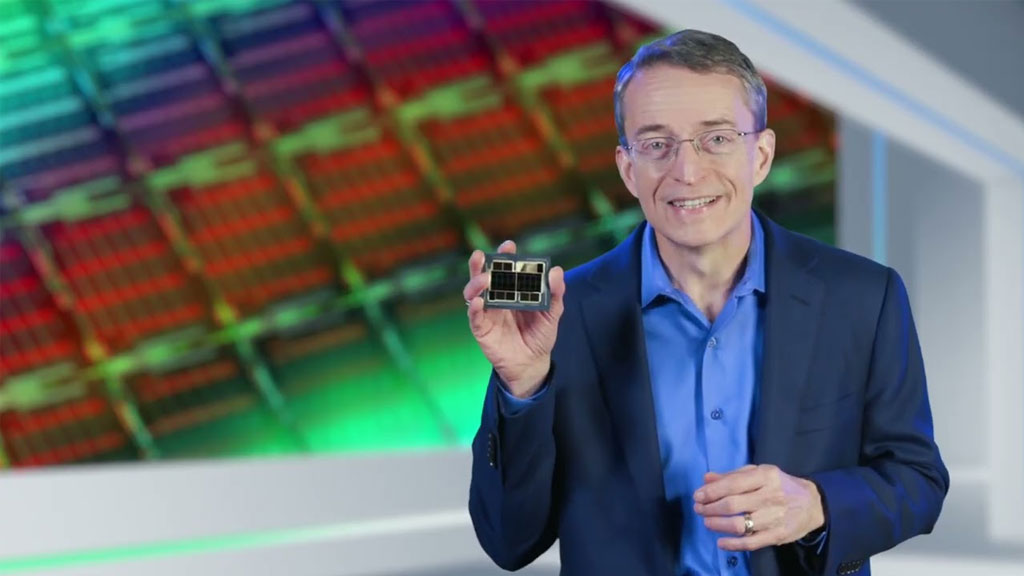
Intel's Meteor Lake laptop chips are selling fast, but Intel's own forecasts aren't looking great.
Intel’s Core Ultra laptop chip is hot. So says Intel CEO Pat Gelsinger. No not that kind of hot, but instead selling like hotcakes, apparently. Despite that Intel’s latest forecasts were below expectations as the firm continues the battle to turn its fortunes around.
During its latest earnings call (via Seeking Alpha) with analysts, Intel said it expects revenues for the next quarter to hit around $12.5B to $13.5B, lower than the $13.61B the investment analyst community was expecting. And those analysts get terribly grumpy whenever a company underperforms expectations.
That said, the numbers are also in on Intel’s latest quarter up to March 30 and revenues are actually up 9% over the first quarter in 2023. So, that’s good news. Gelsinger was also bullish about Intel’s roadmap.
“As we go into the second half of the year, we’re engaging deeply with our customers today, our OEM partners and we just see strength across the board, right. Part of that is driven by our unique product position, some of it driven by the market characteristics and client. AI PC and a second half Windows upgrade cycle, we believe underway. And Core Ultra is hot. And as we said, even in Q2, we’re racing,” Gelsinger said.
He explained that Meteor Lake, Intel’s latest laptop chip branded Core Ultra, is selling faster than expected and that Intel expected to ship double the number of Core Ultra CPUs in Q2 compared to Q1. Much of that gain will come from Intel’s improving ability to manufacture Meteor Lake, which uses a single chiplet based on the latest Intel 4 node, with the remaining four chiplets produced by TSMC’s customer foundry.
Gelsinger likewise claimed that Intel is on track to deliver on its promise to deliver five new chip production nodes in just four years. “Job number one was to accelerate our efforts to close the technology gap that was created by over a decade of underinvestment. The heart of Phase 1 was five nodes in four years. The rallying cry was torrid. It combined accelerating our node transitions with improving our product execution and cadence to regain customer trust,” he said.
So, all is well at Intel. Except it arguably isn’t, at least not yet. We’ve discussed this before, but that whole “five nodes in four years” isn’t quite what it seems. Moreover, Meteor Lake hardly inspires confidence in Intel’s new nodes.
It contains a single chiplet on Intel 4. And yet by Intel’s own account, the CPU is still supply constrained. In other words, Intel can’t meet demand for the new chip despite limiting its involvement in manufacturing terms to one chiplet out of five.
Intel’s chip production capacity plans are revealing to say the least. (Image credit: Tom’s Hardware)
Intel’s own roadmap for its foundry business shows that it doesn’t expect to begin significantly increasing volumes on any of its latest nodes until 2026 and it won’t be until 2027 that chips produced on Intel 4 and other more advanced nodes will represent a majority of it volumes. In 2024 and 2025, the vast, vast majority of Intel’s output will be on Intel 7 or older nodes.
(Image credit: Future)
Best CPU for gaming: The top chips from Intel and AMD.
Best gaming motherboard: The right boards.
Best graphics card: Your perfect pixel-pusher awaits.
Best SSD for gaming: Get into the game ahead of the rest.
That needs to be remembered when Intel bigs up the release of products like Arrow Lake, based on the new 20A node and due later this year, or Panther Lake on 18A next year. According to Intel’s own foundry forecasts, which are presumably ambitious rather than pessimistic, we’re still years away from Intel making chips on Intel 4, Intel 20A and Intel 18A in really big numbers.
Put another way, you could argue the likes of Meteor Lake and Arrow Lake are glorified test chips for new nodes that are still years away from being fit for truly high volume production. They allow Intel to present a narrative of progress. Here’s our new Intel 4 CPU, here’s an even more advanced Intel 18A CPU. We’re hitting our targets.
And, yes, Intel shipped some Meteor Lake chiplets on Intel 4 at the end of 2023 and no doubt at least some 18A Arrow Lake chips will be released later this year. But its own roadmaps show that Intel 4 volumes only really begin to increase in 2026 and only truly become significant in 2027.
So, we’ve been saying this for years and it looks like we’ll have to keep saying for a few more years to come: Intel has plenty left to prove.







